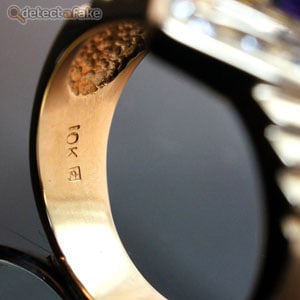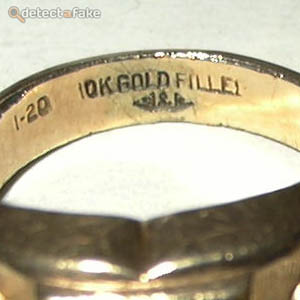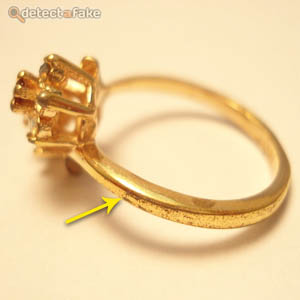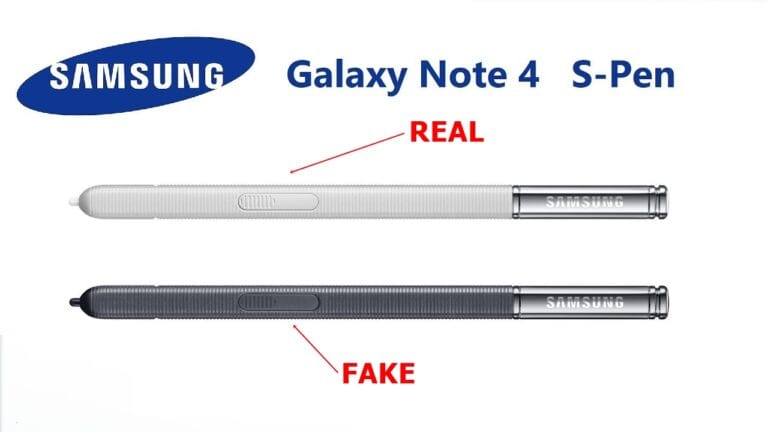How to detect fake Gold Jewelry and Coins
| Step | Description |
|---|---|
| 1 | Magnet Test: Lay the gold piece on a flat surface and use a strong magnet. If the magnet sticks, the gold is likely not solid. |
| 2 | Stamp Inspection: Examine the gold piece for stamps indicating its karat. Common stamps include “10k,” “14k,” and “18k.” Verify the authenticity of these stamps. |
| 3 | Additional Stamps: If the gold has stamps such as “Gold Filled,” “1-20,” “1/20,” “1-100,” “1/100,” “GP,” “GF,” or “EP,” it is likely gold-plated, not solid gold. |
| 4 | Signs of Wear: Check for signs of wear, particularly in used pieces. Worn areas where the metal below is visible may indicate gold plating. |
| 5 | Caution with Gold Coins: Be cautious when buying solid gold coins without proper testing equipment, as plated coins can resemble solid gold coins. |
| 6 | Density Testing Warning: Avoid attempting a density test without proper knowledge. A density test involves weighing gold in air and then in water, requiring specialized equipment. |
Authentication Journey: Insights and Cautions
How to detect fake Gold Jewelry and Coins: Gold, a precious metal, often faces attempts at replication in various forms. The guide below outlines tests to assist in identifying fake gold pieces, offering insights into common markers of authenticity.
Step-by-Step Authentication Guide: the Truth Behind the Gold
Magnet Test: Employ a strong magnet to determine if the gold piece is attracted to it. Authentic gold is not magnetic, so any attraction may indicate a lack of solidity.
Stamp Inspection: Examine the gold piece for karat stamps, such as “10k,” “14k,” or “18k.” These stamps indicate the gold’s purity. Verify the authenticity of these stamps by cross-referencing with known standards.

Additional Stamps: Look for additional stamps like “Gold Filled,” “1-20,” “1/20,” “1-100,” “1/100,” “GP,” “GF,” or “EP.” These stamps suggest gold plating rather than solid gold.


Signs of Wear: Inspect used gold pieces for signs of wear. Areas where the plating has worn off, revealing the metal below, may indicate gold plating.


Caution with Gold Coins: Exercise caution when considering the purchase of solid gold coins without proper testing equipment. Plated gold coins can closely resemble their solid counterparts.
Density Testing Warning: Avoid attempting a density test without proper knowledge and equipment. This advanced test involves weighing gold in air and water, requiring specialized tools for accurate results.

A Cautious Journey in Authenticating Gold
While these tests can offer insights into the authenticity of gold, it’s essential to approach gold purchases with caution. Investing in proper testing equipment is highly recommended for conclusive results. Remember, passing these tests doesn’t guarantee pure gold; it simply aids in detecting potential fakes. Stay informed, exercise diligence, and consult professionals when in doubt.

How To Check if iPhone 15 Pro Max is ORIGINAL or FAKE with Screenshots

How can I tell if my S Pen is a real Samsung S Pen and not a fake?


An Agreement to Include Generative AI in iPhones Is Being Discussed Between Apple and Google

Keep quiet! Please remain silent when receiving the Mega Millions jackpot. Now, complete this.

